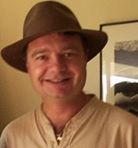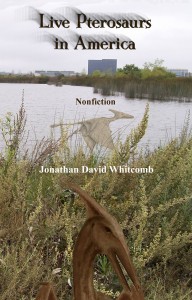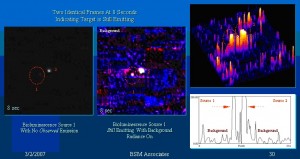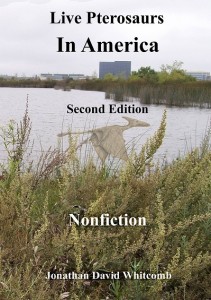Today is the six-year anniversary of the pterosaur sighting by the late cryptozoologist Scott Norman. His associates are grateful that he left us an objective report of his encounter soon after it happened, for he passed away less than a year later.
If my source made no mistake in the date, it was on the night between July 18th and 19th, in 2007, when Scott saw the huge flying creature gliding over a shed, in a secret location in the United States. His associates were taking turns staying up at night, watching the sky for the flying lights and the more rare appearances of the forms of large flying creatures. Scott agreed to take a turn, although he doubted that his friends had seen living pterosaurs. He had seen the video that they had recorded and he thought it looked more like a bird than a pterosaur.
It was between 1:30 and 2:30 a.m.; here are his own words:
I was sitting in a chair, sideways towards the shed looking up at the starry skies, when this animal came gliding just over the shed and into the field and then I lost it. I did not tell them about the sighting until later that morning, I had to sleep on and think about what I saw.
The animal I saw had an 8-10 foot wing span, the wings were bat-like in shape, the inside had that wavy type of look. The body was about 5-6 feet in length, the neck about 1-2 feet in length, the head was about four feet in length, and the head was key for me: it has a crest that was about 2 feet in length, fit that of a pteranodon, don’t know how else to describe it. Our contact had a similar type of sighting three years ago in daylight. In his sighting he saw a long tail, I did not see one, and all of the pteranodon pictures I’ve seen show a real short stubby one. The animal I saw was stockier compared to some of the drawings of pterosaurs I’ve seen. . . .
I only saw the silhouette of the animal against the a stars in the sky and saw no real details, the animal was black, could not see any color to it. The animal was only 20 feet from me, our contact told us his shed is 18 ft high, and the animal was about two feet above that and probably it was a little closer as it flew by me and down into the pasture. The animal was gliding, it did not flap its wing and it did not make any sounds, so if I had not been looking where I was I would probably have not seen it. I shone my small flashlight into the field and did not see the animal so it must have kept flying.
Thank you to Chad Arment for publishing this account from Scott’s report.
Comparison With Another Pterosaur Sighting
Scott estimated the flying creature’s head was about four feet long. This turned my attention to the 1944 Finschhafen sighting by Duane Hodgkinson, who estimated the head of the “pterodactyl” to be about three or four feet long. This suggests to me that it may have been a different species from what was seen by Scott, for the 1944 creature had a wingspan in the neighborhood of thirty feet, far more than the 8-10 foot estimate for Scott’s pterosaur wingspan.
###
It’s a Bird, it’s a Plane, it’s . . . a Pterosaur
When they first notice something flying, many eyewitnesses assume it is a bird; only after looking at it for awhile do they notice things like a long tail with a structure at tail-end and a head crest and a featherless appearance (a few eyewitnesses even see teeth: rather un-bird-like).
Are the investigations of pterosaur sightings scientific or “anti-science?” They are cryptozoological investigations, using whatever scientific tools and methods are available. Jonathan Whitcomb has analyzed 128 of the more-credible sighting reports, late in 2012, concluding that three significant factors show that there was no major hoax involvement in those sightings as a whole.
Pterosaur Extinction (or not)
I see the HUGE bird looking thing fly across the overpass I was on, maybe 20-25 feet in front of my car and about 7 or 8 feet off the ground. . . . it had an enormous pointed beak, with a pointed top of its head. . . . I noted that the wingspan was probably about 5-6 feet wide. Kind of bony wing structure ending in points (almost like sails) with what looked like small claws in the middle. . . . a LONG tail with a spade at the end.
.
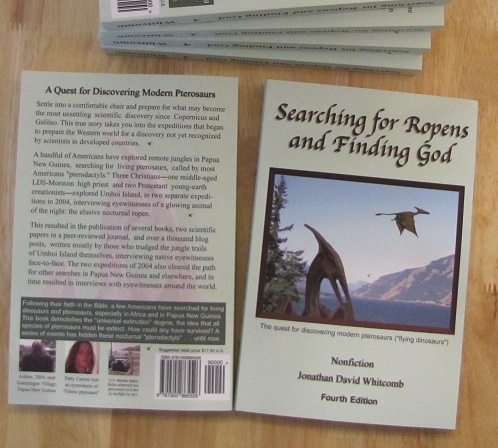
Searching for Ropens and Finding God – fourth edition, nonfiction
From page 51 of the 353-page book:
My offer of 200 kina per week (equal to $70 US) was accepted gladly, but Joe and Luke wanted to know my plans. They had never heard of the ropen, and when I mentioned the size of the creature, their faces spoke volumes, without any reference to a 65-million-year-old extinction. Luke suddenly realized why a stranger was offering him an easy job with generous pay. Joe’s face said, “Will I ever see my brother again?” I told them my camera worked from a distance; still, it took some explaining before they felt assured that I valued safety.
.



